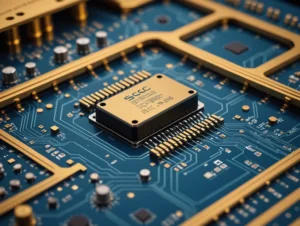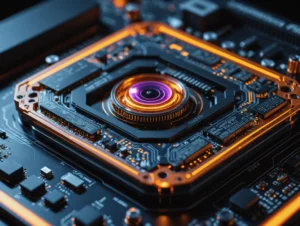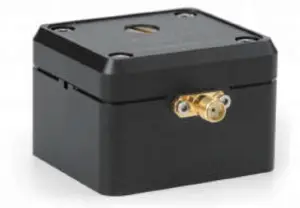Several simulation methods are commonly used for analyzing the propagation of light in silicon photonic devices. These methods vary in complexity and are selected based on the specific requirements of the simulation, such as the type of device and the accuracy needed.
1. 2D FDTD with Effective Index Method
This method is also referred to as 2.5D FDTD and is highly efficient for planar photonic integrated circuits. It allows for omni-directional propagation and is best suited for devices with a ridge or rib waveguide structure. The method works by collapsing a 3D geometry into a 2D set of effective indices. These indices are determined using approaches such as the variational method or reciprocity. The method can handle silicon waveguide thicknesses under 240 nm, making it an efficient option for simulating devices like silicon-based optical circuits at a wavelength of 1550 nm.
Steps involved in this method include:
- Identification of vertical slab modes.
- Meshing the structure to collapse the third dimension.
- Performing the 2D FDTD simulation with the effective materials generated.
2. Beam Propagation Method (BPM)
BPM is an approximate solution to Maxwell’s equations. It was widely used before FDTD became more advanced and is best suited for slowly varying structures. BPM allows for both forward and backward propagation and can model the behavior of complex photonic components such as arrayed waveguide gratings and interferometers. Available in several software tools like PhoeniX Software and Synopsys RSoft, BPM remains a valuable tool for initial design.
3. Eigenmode Expansion Method (EME)
EME decomposes the local optical field into modes, allowing for bidirectional propagation. It is well-suited for structures with complex mode interactions, such as directional couplers and MMI couplers. EME handles an infinite number of modes and is highly accurate for designs requiring large angles and arbitrary accuracy. This method is used in tools like CAMFR and FIMMPROP.
4. Coupled Mode Theory (CMT)
CMT solves optical structures where coupling occurs between different modes. This theory is often used for directional couplers and Bragg gratings. It assumes that the waveguides’ modes are perturbed slightly when brought together and introduces small perturbations that affect mode propagation.
5. Transfer Matrix Method (TMM)
TMM is a fast and simple method used to solve light propagation through sections of varying refractive indices. It is ideal for one-dimensional structures, such as thin-film reflectors or Bragg gratings. This method is available in tools like Synopsys RSoft GratingMOD and MATLAB.
Each of these methods has its own advantages and limitations, and their use depends on the accuracy, complexity, and computational resources required for simulating a given silicon photonic device.





